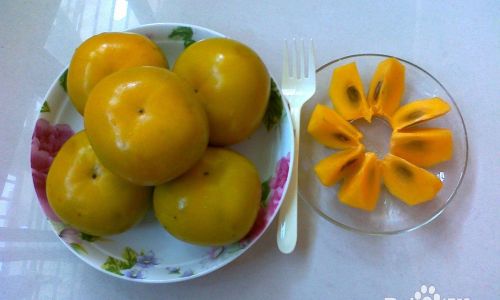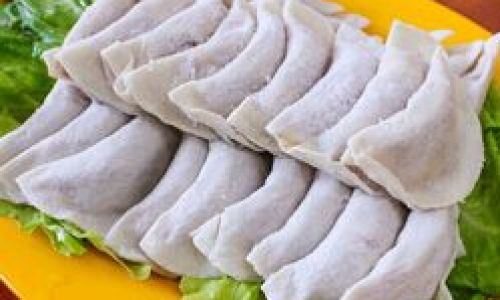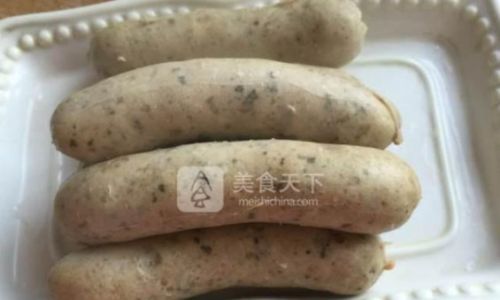Table of content
Persimmons, with their vibrant orange hue and naturally sweet flavor, are a seasonal delight that often graces markets and kitchens during the autumn months. While many are familiar with the soft, jelly-like texture of ripe persimmons, fewer know the joy of transforming this fruit into a crispy, guilt-free snack. Crispy persimmons, also known as dried persimmon chips, offer a delightful contrast of texture and taste—sweet, chewy, and lightly crunchy. This guide will walk you through the process of selecting, preparing, and dehydrating persimmons to achieve that perfect crispiness, along with creative recipe variations and storage tips to ensure your batches last.

Chapter 1: Understanding Persimmons
Before diving into the recipe, it’s essential to grasp the basics of persimmon varieties. There are two primary types: astringent and non-astringent. Astringent persimmons, like the Hachiya variety, contain high levels of tannins and must be fully ripened until they are almost jelly-like to avoid a bitter, chalky taste. Non-astringent persimmons, such as Fuyu, can be eaten while still firm, making them ideal for crispy preparations. Fuyus are squat, tomato-shaped, and retain their structure even when sliced, which is why they are the go-to choice for this recipe.
When selecting persimmons, look for firm, unblemished fruit with smooth, glossy skin. Avoid specimens with bruises, cracks, or soft spots, as these may indicate overripeness or damage. The stem should be intact and green, a sign of freshness. If possible, opt for organic persimmons to minimize pesticide residue, though thorough washing can mitigate this concern.
Chapter 2: Equipment and Ingredients
Creating crispy persimmons requires minimal equipment, making this recipe accessible to home cooks with basic kitchen tools. Here’s what you’ll need:
- Fresh persimmons (Fuyu variety): 6–8 medium-sized fruits.
- Sharp knife or mandoline slicer: For achieving uniform slices.
- Cutting board: Preferably plastic to avoid staining.
- Dehydrator or oven: A dehydrator ensures even drying, but an oven set to low heat works as a substitute.
- Parchment paper or silicone baking mats: To prevent sticking during drying.
- Airtight containers: For storage.
Optional additions for flavor variation include cinnamon, nutmeg, ginger, or a sprinkle of sea salt. For a decadent twist, consider dipping dried persimmon slices in melted dark chocolate.
Chapter 3: Step-by-Step Preparation
Step 1: Washing and Peeling
Begin by rinsing the persimmons under cool water. Gently scrub the skin with a soft brush to remove dirt or residue. While the skin is edible, peeling is optional. Some prefer to leave it on for added texture, while others remove it for a smoother finish. If peeling, use a vegetable peeler or sharp paring knife, working carefully to avoid wasting fruit.
Step 2: Slicing
Using a mandoline slicer set to 1/8-inch thickness or a sharp knife, slice the persimmons into even rounds. Consistency is key here—uneven slices will dry at different rates, leading to some chips being brittle while others remain chewy. Remove any seeds that may be present, though Fuyu persimmons are typically seedless.

Step 3: Pre-Treatment (Optional)
To prevent browning and enhance flavor, some recipes call for pre-treating the slices. A light dip in lemon juice or a mixture of water and ascorbic acid (available at baking supply stores) can achieve this. However, persimmons are less prone to oxidation than apples or bananas, so this step is optional.
Step 4: Dehydration
Method 1: Using a Dehydrator
- Arrange the persimmon slices in a single layer on dehydrator trays, ensuring they do not overlap.
- Set the dehydrator to 57°C (135°F) for astringent varieties or 65°C (149°F) for non-astringent types.
- Dry for 6–12 hours, checking periodically for desired crispiness. The slices should snap when bent but may still feel slightly pliable when cooled.
Method 2: Using an Oven
- Preheat the oven to the lowest setting, ideally 65–70°C (149–158°F). If your oven doesn’t go this low, use the “warm” setting.
- Line baking sheets with parchment paper and arrange slices in a single layer.
- Prop the oven door open slightly with a wooden spoon to allow moisture to escape.
- Bake for 3–5 hours, flipping the slices halfway through. Monitor closely to prevent burning.
Method 3: Air Drying (Sun Drying)
In arid climates with low humidity, air drying is possible. Spread slices on a clean rack or mesh screen and place them in direct sunlight for 2–3 days. Cover with cheesecloth to protect from insects. This method is less predictable but yields intensely flavorful results.
Chapter 4: Achieving the Perfect Crisp
The hallmark of a great crispy persimmon is its texture—light, airy, and satisfyingly crunchy. Achieving this requires patience and attention to detail. Over-drying will result in brittle, tooth-shattering chips, while under-drying leaves them chewy. To test for doneness, remove a slice and let it cool for 5 minutes. If it snaps cleanly, it’s ready. If it bends without breaking, it needs more time.
Chapter 5: Creative Recipe Variations
Crispy persimmons are delicious on their own, but they also serve as a versatile canvas for flavor experimentation. Here are a few ideas to elevate your snack game:

- Spiced Persimmon Chips: Toss slices in a mixture of cinnamon, nutmeg, and a pinch of cayenne pepper before dehydrating.
- Chocolate-Dipped Delights: Once dried, dip half of each chip in melted dark chocolate (70% cocoa or higher) and sprinkle with sea salt.
- Savory Twist: Lightly brush slices with olive oil, sprinkle with smoked paprika, and dehydrate for a surprising umami kick.
- Persimmon “Fruit Leather”: Purée peeled persimmons, spread thinly on a dehydrator sheet, and dry until leathery. Roll into strips for a chewy treat.
Chapter 6: Storage and Shelf Life
Proper storage is critical to maintaining crispness. Store dried persimmons in airtight containers away from light and heat. A desiccant packet or a piece of dried bread can help absorb residual moisture. At room temperature, they’ll last 2–3 weeks; in the refrigerator, up to 6 months; and in the freezer, indefinitely. Thaw frozen chips at room temperature before serving to restore their crunch.
Chapter 7: Health Benefits of Crispy Persimmons
Beyond their delectable taste, crispy persimmons pack a nutritional punch. They’re rich in fiber, vitamins A and C, and antioxidants like beta-carotene and lycopene. Drying concentrates these nutrients, making them a potent snack. Additionally, their natural sweetness eliminates the need for added sugars, aligning with clean-eating philosophies.
Chapter 8: Troubleshooting Common Issues
- Uneven Drying: Rotate trays or baking sheets every 2 hours to ensure even heat distribution.
- Sticky Texture: If slices feel tacky, they may need more time in the dehydrator. Alternatively, increase the oven temperature slightly.
- Burnt Edges: Reduce heat and check more frequently. Ovens with hot spots may require rotating pans.
Chapter 9: Cultural Significance of Persimmons
In many Asian cultures, persimmons symbolize abundance, good fortune, and autumn. In Japan, dried persimmons (hoshigaki) are a traditional winter treat, meticulously prepared by peeling, hanging, and massaging the fruit daily to encourage sugar crystallization. While our method skips the massage, it honors this age-old tradition of preserving nature’s bounty.
Conclusion: Elevate Your Snacking Game
Crispy persimmons are more than a snack—they’re a testament to the magic of transformation. With minimal effort, you can turn a humble fruit into a crunchy, healthful delight that rivals store-bought chips. Whether enjoyed straight from the container, crumbled over yogurt, or paired with a cup of tea, these chips offer a taste of autumn’s fleeting beauty, preserved for months to come. So, the next time you spot a basket of persimmons, seize the opportunity to craft a batch of crispy perfection. Your taste buds—and your body—will thank you.






0 comments